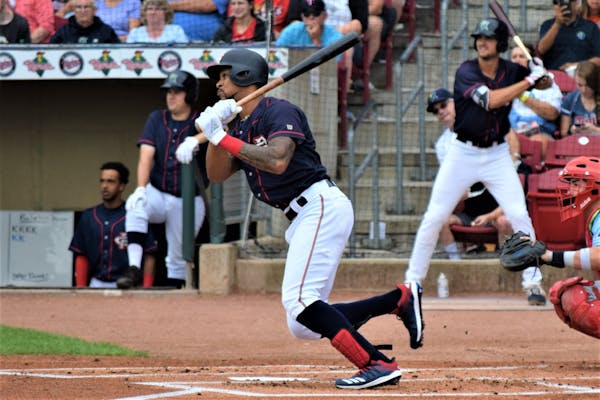It's human nature to make comparisons and gauge our own status (and that of others) as a result. If you get a $50 bonus for some task, for instance, you feel pretty good about it without any other context.
You feel even better in many cases if you find out someone else only got $25, but an anger swells in some cases if you find out someone else received $100 – even though you have the same amount in every scenario.
We can do the same thought exercise with a real example: the Twins pitching staff (though I'll take $50 if anyone is offering).
If you simply compare the Twins pitching staff to the rest of MLB over the course of the entire season, the news is flattering. Minnesota had the eighth-best ERA in baseball entering play Monday (4.18), which firmly classifies the Twins as "above-average" in that category.
But if you isolate on monthly comparisons, your smile turns to a frown and your postseason panic level goes up a few notches.
Their team ERA in August is a much less flattering 4.91, which over the course of a full season would rank in the bottom 10 instead of the top 10 in the majors. The starting pitching is even more troubling: a 5.34 ERA this month, compared to a 4.07 mark for the year.
The Twins as a team this season have been remarkably good at maintaining a steady level of confidence regardless of whether they are temporarily performing above or below expectations.
Perhaps players more than fans innately understand how averages work – that they are not flat lines of performance but fluctuating lines full of peaks and valleys. Just as you should never assume you can walk across a river that is on average 4 feet deep — as it might be up to your ankles in spots and over your head in others – don't confuse a 4.18 team ERA as a constant output.
Here's the best guess about the Twins starting pitching (which has maintained most of the same cast of characters while the bullpen has evolved quite a bit): They overachieved in May (3.08 ERA) and have underachieved in August (aforementioned 5.34 ERA). Those are outlier months. During March/April (4.21), June (3.91) and July (4.16) they performed to expectation.
That doesn't necessarily predict what will happen in September and perhaps the postseason, only what would happen if they pitch as expected.
Of course, there are two other comparisons worth noting.
One: Even with the eighth-best team ERA in baseball, the Twins rank below fellow American League playoff contenders Tampa Bay, Cleveland, Houston and Oakland. They might like their pitching in a vacuum, only to find it doesn't measure up in a series against one of those teams.
Two: The Byron Buxton factor. Counting all runs (earned and unearned this year), the Twins are allowing four runs per game during Buxton's 78 starts in center field this season, but that figure swells to 5.7 runs per game in the 52 games he has not started (either due to rest or injury).
Some of that is probably coincidental – Buxton was healthy in May but has missed almost all of August – but there's no doubt his defense helps save runs.
Buxton should be activated soon. If he's healthy for the stretch run, maybe Twins fans will start liking their team's chances a little more compared to everyone else.
